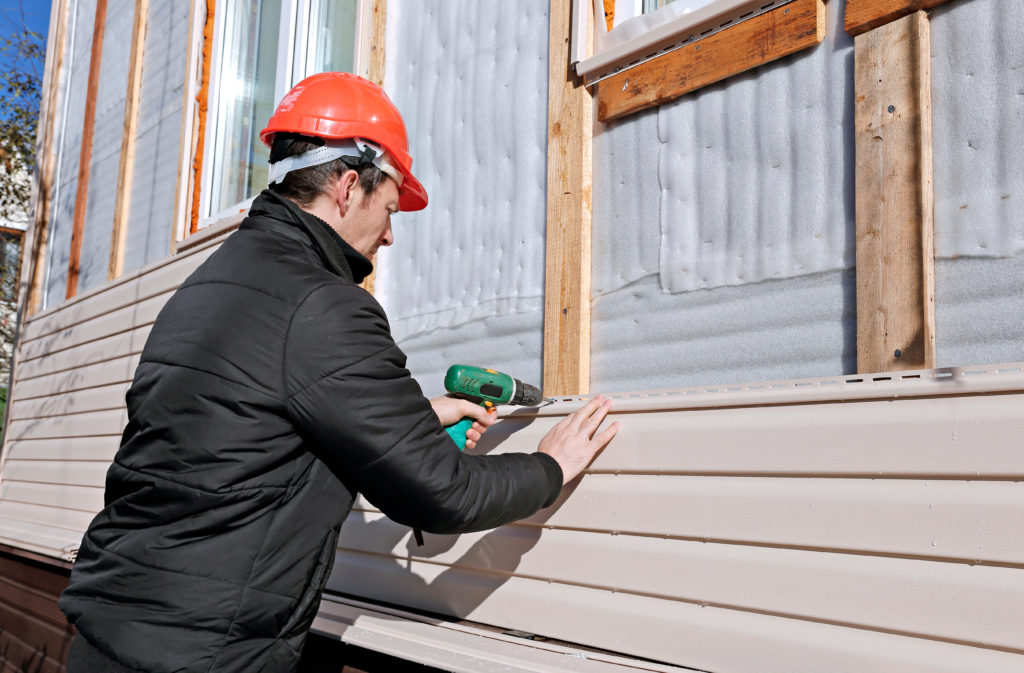Discovering that your home is suffering from a leaky home epidemic and needs significant renovation can be stressful and challenging for the homeowner.
It’s difficult to determine what advice you need, the best solutions available, and where to start to repair your leaky home. However, by talking to professionals, they would recommend recladding as the best fit for your home.
What Is Recladding?
Recladding is the replacement of the exterior cladding, which occurs when current cladding begins to deteriorate or is considered unsafe. Recladding your home as a remodeling project has been linked as the solution for homes affected by the leaky house pandemic. Recladding allows contractors to get to the framing to fix any underlying problem before replacing the cladding, giving room to repair damages on the framing, flooring, decks, or balustrades resulting in leaky home symptoms.
However, not every recladding means that your house has weather tightness issues or a leaky home syndrome. There are many reasons for recladding, including aesthetic improvements, getting ahead of potential problems, refreshing your home, and improving your property’s value.
If you need to hire experts to reclad your home, you can visit resolutionprojects.co.nz, and you’ll be sorted.
Signs That Your House Needs Recladding
One of the fantastic things about cladding is that it can last for a long time with almost no maintenance, but this depends on the type of cladding you have. For instance, the wood cladding may need to be treated or painted every five years, while vinyl cladding requires an annual wash.
However, no matter how much maintenance you give your cladding, a time will come when they get old and need to be replaced. In this case, there are signs to look out for that indicate it’s time for recladding, including:
Warped, Cracked, Or Rotting Cladding
These are obvious signs that your cladding can’t be fixed or repaired and needs to be replaced. If your cladding is designed from wood, watch out for any signs of crumbled panels or any dark spots. If you identify this, it’s an indication that moisture has found its way to the wood fibers, meaning that the laminate protecting the cladding is damaged. This causes the breakdown of the wood’s strength through rotting, which worsens if it’s ignored.
Tapping the wood with a screwdriver handle, you can also check if your wooden cladding has dry rot. If the wood crumbles, sounds hollow or splits, it is an indication that the wooden cladding is rotten. Dry rot is hardly identified as it occurs under the surface, leaving the top part intact.
For vinyl cladding, any cracked or warped sections should signal you that it’s time to replace your cladding. This is because these sections allow moisture to infiltrate behind the cladding, causing it to rot from beneath. To check for vinyl cladding damage, try removing parts of the cladding that appear loose. If they quickly peel off, it’s a sign your cladding is old and needs replacement.

Mold, Fungus, Or Mildew Growth
Keep an eye out for any visible growth on your cladding, such as mold, fungus, or moss. While some fungi and molds are harmless, they should be removed once spotted. These growths survive in wet areas or conditions, so their presence on your cladding may mean that the cladding is distorted and allows moisture to infiltrate your house. Since some of these growths are harmful and can cause respiratory issues, identifying them on your cladding should be a red flag to replace the cladding immediately.
Paint Peeling Or Sagging Ceilings Inside Your Home
In extreme cases, a deteriorating cladding can manifest itself inside your home. If you notice any paint peeling, loose wallpaper, or sagged ceilings inside the house, it’s a sign that water is penetrating through the cladding and into the wall or roof. Address this immediately by replacing the cladding to prevent more significant damage in your home.
Birds And Animals Inside Your Home
If you stay near forests or wooded areas, any birds, squirrels, or mice inside your home could signify that your cladding has holes where these creatures find their way in. In such a case, you should have the cladding replaced, as these animals can cause damage to your home.
Faded Cladding
If your cladding loses its color and fades, it’s a clear sign that cladding is nearing the end of its life. While this doesn’t mean that your cladding is damaged, it’s a sign that you should replace it soon before it starts causing problems.
Conclusion
There you have it! If you notice any of those above signs, you should look at them in more detail. Early treatment can help prolong the life of your cladding. However, recladding is the best option if the signs are extreme.






